In the ever-evolving landscape of kitchen appliances, the RoHS 3 compliant heating system has emerged as a significant milestone. This shift towards more sustainable and environmentally friendly technologies is reshaping the market dynamics in both Europe and the United States. As consumers become more conscious of the impact of their purchases on the planet, the demand for RoHS 3 compliant heating systems is on the rise. This article delves into the intricacies of these systems, exploring their features, the challenges and opportunities they present, and the case studies of successful implementations. Ultimately, it highlights why RoHS 3 compliant heating systems are poised to become a game-changer in the kitchen appliances industry.
I.TheRoHS3Regulation:WhatItMeansforHeatingSystems
The RoHS 3 Regulation: A Game-Changer for Heating Systems
The RoHS 3 regulation, also known as the Restriction of Hazardous Substances (RoHS), has been a pivotal force in shaping the landscape of various industries, including the heating system sector. This stringent directive not only sets limits on the use of certain hazardous substances but also mandates the provision of information on the content of these substances in electrical and electronic equipment. In this context, let’s delve into what the RoHS 3 regulation entails and its profound impact on heating systems.
At its core, RoHS 3 focuses on the reduction of lead, mercury, cadmium, hexavalent chromium, and polybrominated biphenyls (PBBs) in products. These substances, often found in heating systems, can pose significant health and environmental risks. By restricting their use, RoHS 3 aims to minimize the potential for harm to both consumers and the planet.
One of the key aspects of RoHS 3 is the introduction of new categories of products that are subject to the regulation. This expansion includes heating systems, which were previously not explicitly covered under RoHS 2. This shift is particularly significant as heating systems are integral to homes and commercial buildings, and their environmental impact can be substantial.
For heating system manufacturers, compliance with RoHS 3 requires a reevaluation of their production processes. This means sourcing materials that are free from the restricted substances or finding alternative components that can achieve the same functionality without compromising on performance. The transition to RoHS 3 compliant heating systems is not without its challenges, but it also presents opportunities for innovation and improvement.
The environmental benefits of RoHS 3 compliant heating systems are substantial. By reducing the presence of hazardous substances, these systems contribute to a cleaner and healthier environment. They also align with the growing consumer demand for eco-friendly products, which is reshaping the market landscape. As consumers become more environmentally conscious, they are increasingly seeking out products that are not only efficient but also sustainable.
From a technical standpoint, the transition to RoHS 3 compliant heating systems necessitates the development of new materials and manufacturing techniques. This can lead to the creation of more efficient and durable heating solutions. For instance, the use of alternative materials for heat exchangers can improve energy efficiency and reduce the system’s overall carbon footprint.
Moreover, RoHS 3 compliant heating systems are likely to feature advanced monitoring and control systems. These systems can optimize energy use, further enhancing the environmental benefits. With the rise of smart home technology, heating systems that can be integrated into a broader smart home ecosystem will become more prevalent, offering users greater convenience and control over their energy consumption.
However, the adoption of RoHS 3 compliant heating systems is not without its challenges. The initial investment in research and development, as well as the sourcing of new materials, can be costly. Manufacturers may also face a learning curve as they adapt to the new regulatory requirements. Despite these challenges, the long-term benefits of compliance are clear, including improved product reputation and access to new markets.
The impact of RoHS 3 on the heating system market is also expected to drive industry consolidation. Smaller manufacturers may find it difficult to comply with the new standards and may be forced to merge with larger companies that have the resources to invest in the necessary changes. This consolidation could lead to a more competitive market with fewer but stronger players.
In conclusion, the RoHS 3 regulation marks a significant shift in the heating system industry. By mandating the reduction of hazardous substances, it forces manufacturers to innovate and improve their products. The resulting RoHS 3 compliant heating systems offer environmental benefits, align with consumer preferences, and can lead to more efficient and sustainable heating solutions. While the transition may be challenging, the long-term advantages make it a crucial step towards a more sustainable future.
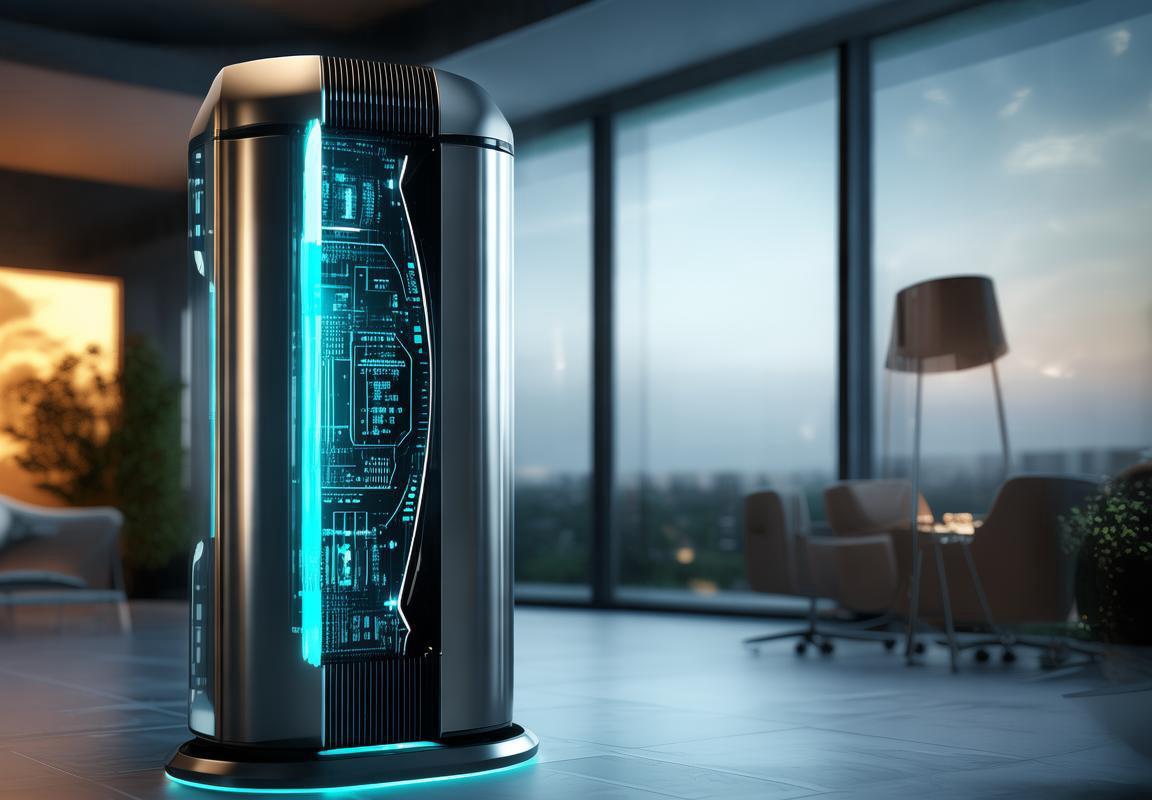
II.TheEuropeanKitchenAppliancesMarket:EmbracingRoHS3Standards
The European kitchen appliances market has long been at the forefront of innovation and sustainability. With the introduction of RoHS 3 (Restriction of Hazardous Substances) standards, the landscape of this market has shifted to prioritize eco-friendly and compliant products. Here’s a closer look at how these standards are being embraced in the European kitchen appliances industry.
Manufacturers across the continent are increasingly focusing on the reduction of hazardous substances in their products. This includes lead, mercury, cadmium, hexavalent chromium, and polybrominated biphenyls (PBBs), which are restricted under RoHS 3. The shift towards these standards is not only driven by regulatory requirements but also by a growing consumer demand for greener, more sustainable appliances.
Consumers in Europe are becoming more environmentally conscious, and their preferences are influencing the industry. Eco-friendly kitchen appliances are not just a niche market anymore; they are a mainstream choice. The European market is seeing a surge in the popularity of smart, energy-efficient, and RoHS 3 compliant heating systems, ovens, dishwashers, and refrigerators.
The implementation of RoHS 3 has prompted manufacturers to innovate and find alternatives to harmful materials. This has led to the development of new technologies and materials that are safer for the environment and for consumers. For instance, some companies are now using lead-free solders, cadmium-free brasses, and mercury-free sensors in their heating systems.
In the European Union, the RoHS directive has been a cornerstone of environmental policy. The updated RoHS 3 standards, which came into force in 2019, have expanded the scope to include more products and substances. This has meant that kitchen appliance manufacturers must now adhere to stricter guidelines when designing and producing their goods.
One significant aspect of RoHS 3 compliance is the traceability of hazardous substances. European manufacturers are investing in better supply chain management to ensure that the materials they use are free from restricted substances. This not only ensures regulatory compliance but also builds consumer trust.
The European kitchen appliances market is also seeing a rise in certifications and labels that signify RoHS 3 compliance. These labels are becoming a key differentiator for consumers who are looking for products that align with their values and environmental concerns. Appliances with these certifications often command a premium in the market.
Moreover, the European market is witnessing a trend towards modular and recyclable appliances. Designers are focusing on creating products that are not only compliant with RoHS 3 but also easy to dismantle and recycle at the end of their life cycle. This approach not only reduces environmental impact but also addresses the issue of electronic waste.
The impact of RoHS 3 on the European kitchen appliances market extends beyond just the manufacturing process. It has also influenced product design, with manufacturers focusing on creating aesthetically pleasing and functional appliances that are also sustainable. This has led to a new wave of smart kitchen appliances that are not only compliant but also offer advanced features that enhance energy efficiency and user convenience.
Despite the challenges of adhering to RoHS 3 standards, European manufacturers are finding opportunities for growth. The market for eco-friendly appliances is expanding, and there is a wealth of innovative products being developed to meet the demands of environmentally conscious consumers.
In conclusion, the European kitchen appliances market is embracing RoHS 3 standards with enthusiasm. The industry is evolving to meet the stricter regulations while also catering to the growing demand for sustainable products. This shift towards compliance and sustainability is not just a regulatory necessity; it is a strategic move that positions European manufacturers as leaders in the global market for eco-conscious kitchen appliances.
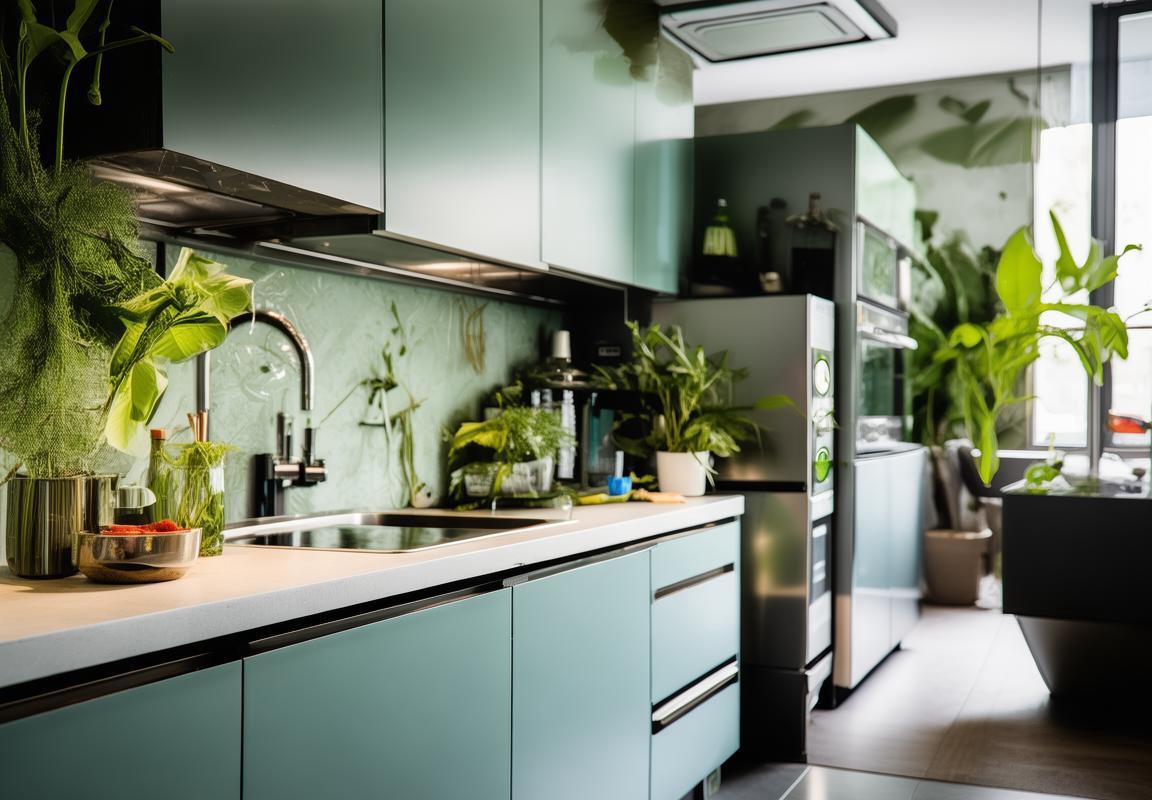
III.TheAmericanKitchenAppliancesMarket:ADifferentLandscape
In the United States, the kitchen appliances market has a distinct character compared to its European counterpart. While Europe has been a pioneer in adopting stringent environmental regulations, the American market operates with its own set of dynamics and consumer preferences.
The U.S. market is known for its diverse range of products and the preference for innovation. Consumers are often more focused on the latest features and technology, with energy efficiency being a secondary concern in many cases. This contrasts with Europe, where environmental standards are deeply ingrained in consumer purchasing decisions.
In the American kitchen appliances market, the presence of RoHS 3 compliant heating systems is growing but not as dominant as in Europe. The U.S. has its own set of regulations, such as the Energy Star program, which encourages energy efficiency without the same emphasis on the restricted use of hazardous substances.
Despite this, American manufacturers are increasingly recognizing the importance of environmental compliance. They are adapting to meet both domestic and international standards to expand their market reach. For instance, some brands are investing in research and development to create heating systems that are not only energy-efficient but also adhere to RoHS 3 requirements.
One notable difference is the way the American market approaches sustainability. While Europeans are more likely to prioritize the environmental impact of their purchases, Americans tend to value the overall performance and cost-effectiveness of their appliances. This means that while some consumers may opt for RoHS 3 compliant heating systems, they may not be as willing to pay a premium for them compared to their European counterparts.
The American market also sees a strong focus on brand reputation and customer service. Companies that can demonstrate a commitment to sustainability while also providing top-notch appliances are more likely to gain market share. This is evident in the partnerships some U.S. appliance manufacturers have formed with sustainability-focused organizations, which help to bolster their green credentials.
Consumer behavior in the U.S. is shaped by a variety of factors, including cultural differences, economic conditions, and technological advancements. For example, the rise of smart home technology has influenced the American market, with consumers showing interest in appliances that offer connectivity and remote control capabilities. While this doesn’t directly relate to RoHS 3 compliance, it does reflect a broader trend towards integrated, efficient, and environmentally friendly products.
Moreover, the U.S. kitchen appliances market is influenced by regional preferences. Different regions may have varying needs and preferences, which can affect the types of heating systems that are popular. For instance, in colder climates, consumers might prioritize the heating capacity and efficiency of their appliances over other features.
The regulatory landscape in the U.S. is also unique. While the Environmental Protection Agency (EPA) and the Consumer Product Safety Commission (CPSC) play a role in overseeing appliance safety and environmental standards, they do not have the same level of influence as the European Union’s Restriction of Hazardous Substances (RoHS) directive.
In summary, the American kitchen appliances market presents a different landscape when it comes to RoHS 3 compliance. It is characterized by a mix of consumer preferences, technological innovation, and a regulatory environment that focuses on energy efficiency and product safety, albeit with a less stringent approach to hazardous substance restriction compared to Europe. Manufacturers must navigate these nuances to successfully cater to the diverse needs of American consumers.
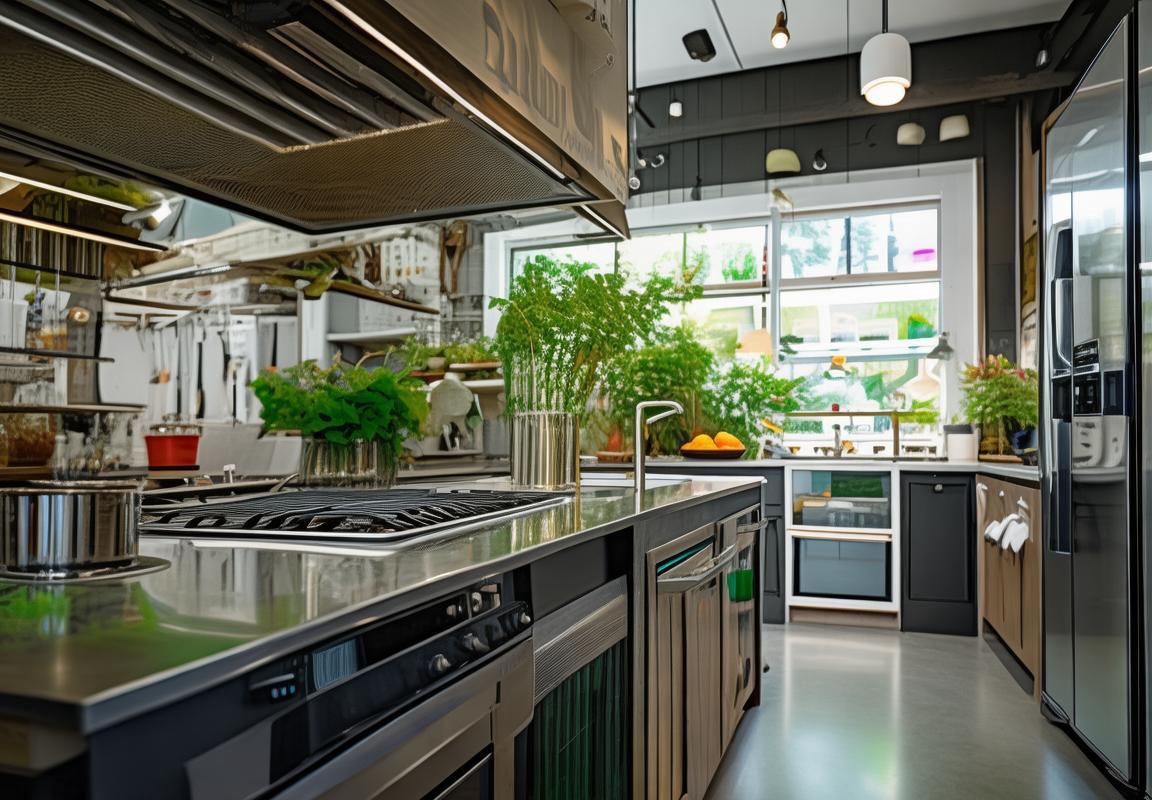
IV.KeyFeaturesofRoHS3CompliantHeatingSystems
In the evolving landscape of kitchen appliances, the introduction of RoHS 3 compliant heating systems marks a significant shift in design and functionality. These systems are not just about meeting regulations; they represent a leap forward in safety, environmental responsibility, and user satisfaction.
The RoHS 3 directive, or the Restriction of Hazardous Substances, is a crucial regulatory framework that limits the use of certain hazardous materials in electrical and electronic equipment. When it comes to heating systems, this means that manufacturers must now ensure that their products are free from restricted substances like lead, mercury, cadmium, hexavalent chromium, and polybrominated biphenyls (PBBs).
One of the most notable features of RoHS 3 compliant heating systems is the stringent reduction of hazardous substances. This shift has led to the development of innovative materials and manufacturing processes. For instance, manufacturers are now incorporating alternative heat sinks made from materials like aluminum or copper, which are not only more sustainable but also perform efficiently.
Energy efficiency has become a cornerstone of these heating systems. With the aim to minimize environmental impact, these appliances are designed to convert energy more effectively into heat, thereby reducing energy consumption. Advanced insulation and heat exchanger technologies are employed to ensure that the heat output is optimized, leading to lower utility bills and a smaller carbon footprint.
Durability and reliability are also enhanced through the use of high-quality components and materials. RoHS 3 compliant heating systems are engineered to last longer, with robust construction that can withstand harsh conditions. This longevity not only benefits the user but also aligns with the principles of circular economy, where products are designed for the long term.
Safety features have been significantly improved with RoHS 3 compliance. Traditional heating systems often contained components that posed risks of fire or electrical hazards. Under the new standards, heating systems are required to have better electrical insulation, thermal protection, and fail-safe mechanisms. This means that users can enjoy the convenience of a heating system without compromising their safety.
Another key feature is the integration of smart technology. RoHS 3 compliant heating systems often come with programmable controls and smart features that allow users to manage the appliance remotely. This not only adds convenience but also ensures that the heating system operates at peak efficiency, adjusting to the user’s needs and preferences.
Design-wise, these heating systems are sleeker and more modern. The removal of hazardous materials has allowed for a lighter, more compact design, which is aesthetically pleasing and can fit seamlessly into various kitchen layouts. This emphasis on design does not compromise functionality; rather, it enhances the overall user experience.
Maintenance and serviceability have also been streamlined. With RoHS 3 compliant heating systems, components are easier to replace and the systems are designed to be service-friendly. This reduces downtime and the cost of repairs, making the appliance a more economical choice in the long run.
In terms of environmental impact, RoHS 3 compliant heating systems are a step towards a greener future. By eliminating harmful substances and improving energy efficiency, these systems contribute to reducing waste and pollution. This not only satisfies regulatory requirements but also resonates with consumers who are increasingly conscious of their environmental footprint.
Lastly, the integration of eco-friendly materials in the manufacturing process is a testament to the commitment of manufacturers to sustainability. From the raw materials to the final product, these heating systems are crafted with a focus on reducing the environmental impact at every stage.
In conclusion, the key features of RoHS 3 compliant heating systems encompass a holistic approach to safety, sustainability, and user satisfaction. From the reduction of hazardous substances to the integration of smart technology, these systems are setting new standards in the kitchen appliances industry. As consumers become more environmentally aware and regulations continue to evolve, the demand for such advanced heating solutions is only expected to grow.
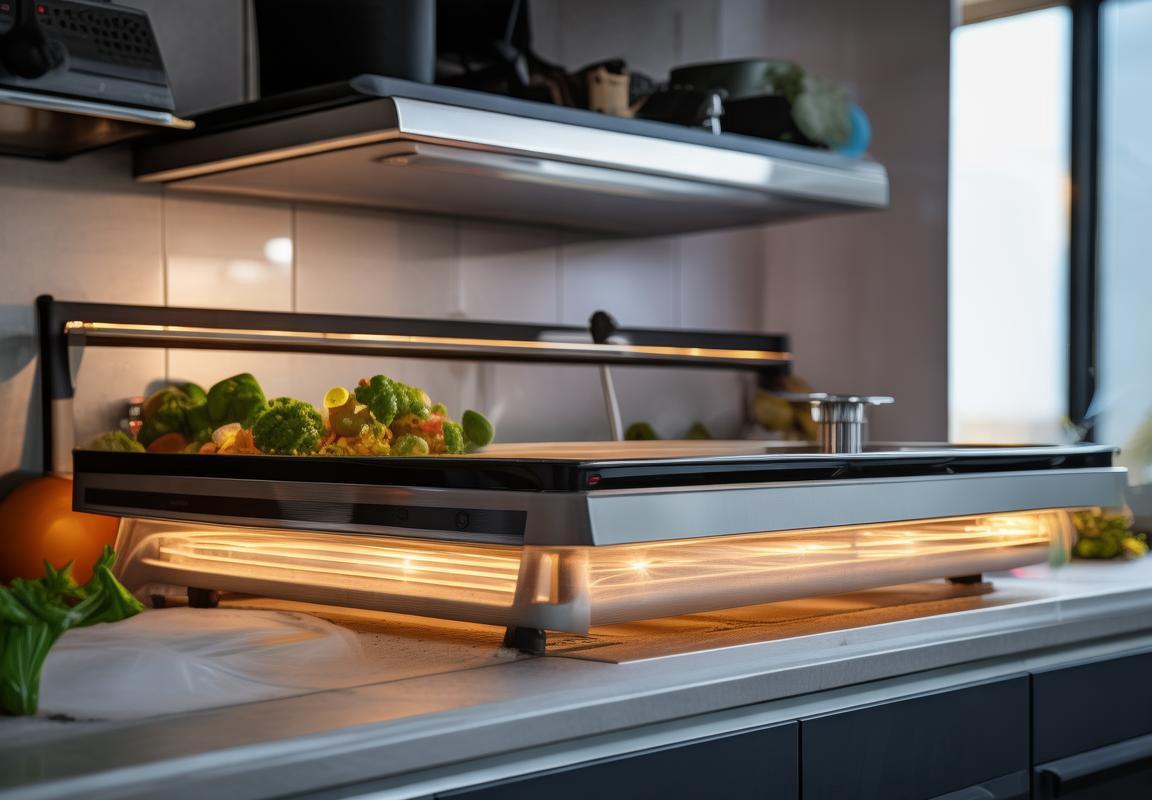
V.ChallengesandOpportunitiesinAdoptingRoHS3
Navigating the complexities of RoHS 3 compliance can be a daunting task for manufacturers and consumers alike. This section delves into the challenges and opportunities that arise when embracing the RoHS 3 standards.
The Technical Aspects of Compliance
Ensuring that heating systems meet RoHS 3 standards requires a deep understanding of the materials used in their construction. This means manufacturers must meticulously examine each component for the presence of restricted substances, including lead, mercury, cadmium, hexavalent chromium, and polybrominated biphenyls (PBBs). The challenge lies in finding alternatives that maintain the performance and lifespan of the heating systems without compromising on safety or efficiency.
Cost Implications
The transition to RoHS 3 compliant heating systems often comes with a financial burden. The need for more expensive, environmentally friendly materials can increase production costs significantly. Moreover, the process of certifying compliance can be costly, involving additional testing and potentially retooling production lines. However, these costs can be offset by the long-term benefits of reduced environmental impact and potentially higher consumer demand for eco-friendly products.
Market Acceptance and Consumer Education
One of the biggest challenges in adopting RoHS 3 is the market’s readiness to accept these changes. Consumers need to be educated about the benefits of RoHS 3 compliant heating systems, including their reduced environmental footprint and potential cost savings over time. Manufacturers must invest in marketing campaigns that effectively communicate these advantages to gain consumer trust and encourage adoption.
Regulatory Compliance and Documentation
Maintaining RoHS 3 compliance requires ongoing vigilance. Manufacturers must keep detailed records of their supply chain, ensuring that every component and material used in their heating systems meets the stringent standards. This documentation process can be time-consuming and requires a robust quality management system to ensure accuracy and prevent non-compliance issues.
Technological Innovation and Adaptation
The push towards RoHS 3 compliance can drive technological innovation. Manufacturers may develop new materials and manufacturing processes that not only meet the regulations but also improve the overall performance of heating systems. This can lead to the creation of more energy-efficient and durable products, offering both a challenge and an opportunity to stay ahead of the competition.
Sustainability and Long-Term Planning
Adopting RoHS 3 standards is not just about meeting regulatory requirements; it’s a step towards sustainability. Companies that embrace these changes can position themselves as leaders in the market, appealing to environmentally conscious consumers and investors. However, this requires long-term planning and a commitment to sustainable practices, which can be challenging but also offers substantial opportunities for growth and differentiation.
Global Supply Chain Management
For companies with a global supply chain, ensuring RoHS 3 compliance can be particularly challenging. They must work closely with suppliers from various countries to ensure that all parts and materials are RoHS 3 compliant. This requires effective communication, negotiation, and possibly the development of new partnerships to meet the standards.
Consumer Demand and Market Trends
While there are challenges, there are also significant opportunities. As consumers become more environmentally aware, there is a growing demand for eco-friendly products. Companies that can offer RoHS 3 compliant heating systems may find a competitive edge in the market. Keeping abreast of market trends and consumer preferences is crucial for identifying new opportunities and staying relevant.
In conclusion, the adoption of RoHS 3 compliant heating systems presents a complex web of challenges and opportunities. Manufacturers must navigate technical, financial, and regulatory hurdles while leveraging innovation and sustainability to drive market success. The journey towards compliance is not without its difficulties, but for those willing to invest in the process, the rewards can be substantial.

VI.CaseStudies:SuccessfulRoHS3CompliantHeatingSystemImplementations
In the realm of heating systems, several companies have successfully navigated the transition to RoHS 3 compliance, showcasing innovative approaches and solutions. Here are a few case studies that highlight their achievements:
-
Innovative Thermostat Integration: One European heating system manufacturer focused on integrating smart thermostats into their RoHS 3 compliant heating systems. This not only enhanced energy efficiency but also provided users with precise control over their heating schedules, leading to significant energy savings and customer satisfaction.
-
Material Innovation: A leading American heating appliance company made a significant stride by developing new materials that met the stringent RoHS 3 requirements. By replacing harmful substances with eco-friendly alternatives, they were able to maintain the performance of their products while ensuring compliance with the regulation.
-
Design and Manufacturing Process Adjustments: A small, family-owned heating system manufacturer in Germany faced the challenge of rethinking their design and manufacturing processes. They invested in research and development to create a heating system that was both RoHS 3 compliant and cost-effective. The result was a compact, energy-efficient unit that quickly gained popularity in the market.
-
Collaboration with Suppliers: A global heating system supplier recognized the importance of collaboration with their supply chain. They worked closely with their partners to ensure that all components used in their heating systems adhered to RoHS 3 standards. This collaborative effort not only streamlined the compliance process but also fostered a culture of sustainability within the supply chain.
-
Customer Education and Support: A well-known heating system brand in the UK realized that customer education was crucial in the adoption of RoHS 3 compliant systems. They launched a comprehensive campaign to inform consumers about the benefits of these new systems, addressing concerns and misconceptions. This proactive approach helped in building trust and loyalty among their customer base.
-
Regulatory Compliance as a Competitive Advantage: A mid-sized heating system manufacturer in France saw RoHS 3 compliance as an opportunity to differentiate their products in a crowded market. By emphasizing their commitment to environmental responsibility, they were able to attract eco-conscious consumers and gain a competitive edge.
-
Product Lifecycle Management: An international heating system company implemented a robust product lifecycle management system to ensure that all stages of their heating systems, from design to disposal, were RoHS 3 compliant. This holistic approach allowed them to maintain high standards throughout the product’s life, from manufacturing to recycling.
-
Global Market Expansion: A heating system manufacturer in Asia leveraged their RoHS 3 compliant products to enter new markets, particularly in Europe and the United States. The compliance certification opened doors to government contracts and partnerships with eco-friendly retailers, expanding their reach and market share.
These case studies demonstrate that adopting RoHS 3 compliant heating systems is not just about meeting regulatory requirements; it’s about innovation, collaboration, and a commitment to sustainability. By focusing on these aspects, companies can turn compliance into a competitive advantage and contribute positively to the environment.
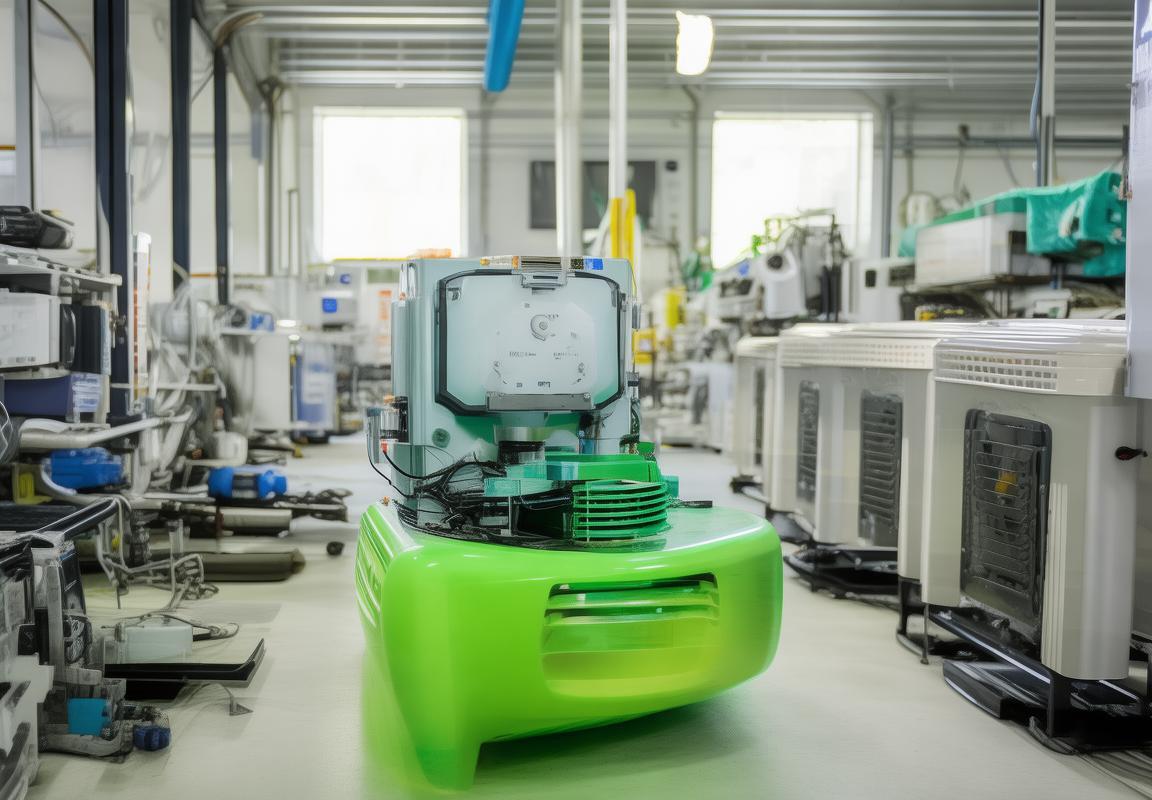
VII.FutureOutlook:TheRoadAheadforRoHS3CompliantHeatingSystems
The landscape of heating systems is evolving, with RoHS 3 compliance becoming a cornerstone in the industry. As manufacturers and consumers alike navigate this new terrain, the future looks promising yet fraught with challenges. Innovations in technology and shifting regulatory landscapes are reshaping the market, and understanding the direction we’re heading is crucial.
Innovation and EfficiencyTechnological advancements are driving the development of heating systems that not only meet RoHS 3 standards but also offer superior efficiency and performance. Smart heating solutions, equipped with IoT capabilities, are becoming increasingly popular. These systems can optimize energy use, reduce waste, and provide users with greater control over their heating environments.
Consumer Awareness and DemandConsumer awareness of environmental issues and health concerns is at an all-time high. As a result, there’s a growing demand for RoHS 3 compliant heating systems that are safe, energy-efficient, and sustainable. This shift in consumer preferences is pushing manufacturers to invest in research and development, ensuring that the next generation of heating products is both eco-friendly and user-friendly.
Global Market ExpansionThe success of RoHS 3 compliant heating systems is not limited to a single region. In fact, as more countries adopt similar regulations, there’s an opportunity for these systems to become a global standard. This expansion could lead to a more uniform set of environmental standards worldwide, benefiting both the environment and the global economy.
Regulatory Compliance and CertificationMaintaining compliance with RoHS 3 standards is a complex task. Manufacturers must navigate a maze of certifications and ensure that every component of their heating systems meets the stringent requirements. This process demands a significant investment in quality control and testing, but it also opens doors to new markets and consumer bases.
Economic and Social ImpactThe adoption of RoHS 3 compliant heating systems has the potential to have a profound economic and social impact. By reducing harmful emissions and improving energy efficiency, these systems can contribute to lower energy costs and improved air quality. Additionally, they can enhance the overall health and well-being of users, particularly in densely populated urban areas.
Collaboration and PartnershipsTo successfully integrate RoHS 3 compliant heating systems into the market, collaboration between manufacturers, suppliers, and regulatory bodies is essential. Partnerships can lead to the development of new materials and technologies, streamlining the certification process and ensuring that products are ready for market launch.
Environmental Advocacy and Policy InfluenceEnvironmental advocacy groups play a crucial role in shaping the future of RoHS 3 compliant heating systems. By pushing for stricter regulations and promoting the benefits of these systems, they can influence policy and encourage broader adoption. This advocacy can also lead to the development of innovative solutions that address the most pressing environmental challenges.
Market Growth and Economic PotentialThe market for RoHS 3 compliant heating systems is poised for significant growth. As more consumers and businesses recognize the long-term benefits of these systems, demand is expected to rise. This growth presents an economic opportunity for manufacturers and suppliers, but it also requires a commitment to continuous improvement and innovation.
In conclusion, the road ahead for RoHS 3 compliant heating systems is filled with both challenges and opportunities. As the industry adapts to these new standards, it can expect to see advancements in technology, increased consumer awareness, and a push towards a more sustainable future. The journey may be complex, but the potential rewards are substantial.

VIII.Conclusion:WhyRoHS3CompliantHeatingSystemsAreaGame-Changer
In the evolving landscape of the kitchen appliances industry, the adoption of RoHS 3 compliant heating systems marks a significant shift towards sustainability and environmental responsibility. These systems not only promise a healthier living environment but also present a range of opportunities for innovation and market growth. Let’s delve into why these compliant heating systems are truly a game-changer.
The integration of RoHS 3 compliant heating systems has already begun to redefine consumer expectations. As consumers become more environmentally conscious, they are actively seeking products that align with their values. These heating systems, which adhere to stringent regulations regarding the use of hazardous substances, are poised to become the new norm in the kitchen appliances market.
These systems are not just about meeting regulations; they offer a range of benefits that resonate with modern consumers. The reduction in lead, mercury, cadmium, hexavalent chromium, and polybrominated biphenyls (PBBs) content means that these heating systems are safer for users and the environment. The shift towards cleaner materials is not just a legal requirement but also a testament to the industry’s commitment to sustainable practices.
From a technological standpoint, RoHS 3 compliant heating systems represent a leap forward in design and functionality. With advancements in energy efficiency, these systems are not only eco-friendly but also cost-effective for consumers. The longevity and reliability of these systems ensure that they remain a wise investment for homeowners.
However, the transition to RoHS 3 compliant heating systems is not without its challenges. The technical hurdles involved in developing and manufacturing these systems can be significant. Companies must invest in new technologies and materials, which can be costly and time-consuming. Yet, this investment is often offset by the long-term benefits of reduced maintenance and operational costs.
Another challenge lies in the cost implications for both manufacturers and consumers. The initial cost of RoHS 3 compliant heating systems may be higher due to the use of alternative materials and advanced technologies. Yet, the potential for energy savings and the positive impact on health and the environment justify this investment in the long run.
Market acceptance is also a critical factor. Consumers need to be educated about the benefits of these systems, and manufacturers must communicate these advantages effectively. As awareness grows, it’s likely that demand for RoHS 3 compliant heating systems will increase, creating a virtuous cycle of innovation and consumer preference.
Case studies of successful implementations of RoHS 3 compliant heating systems are becoming more prevalent. For instance, a European appliance manufacturer has seen a surge in sales of their eco-friendly heating systems, demonstrating the market’s readiness for such products. Similarly, an American company has gained a competitive edge by incorporating RoHS 3 standards into their product line, appealing to environmentally conscious consumers.
Looking ahead, the future of RoHS 3 compliant heating systems is promising. Market growth projections suggest that these systems will become increasingly popular, driven by both regulatory requirements and consumer demand. Technological advancements will continue to refine these systems, making them more efficient and cost-effective.
Regulatory trends also play a crucial role in shaping the future of RoHS 3 compliant heating systems. As more countries adopt similar standards, the global market for these systems will expand. This will not only create new opportunities for manufacturers but also encourage further innovation in sustainable technologies.
In conclusion, RoHS 3 compliant heating systems are a game-changer because they align with the global shift towards sustainability and environmental stewardship. They offer tangible benefits to consumers, from health and safety to cost savings and energy efficiency. While challenges exist, the opportunities for growth and innovation are substantial. As these systems become more mainstream, they will likely revolutionize the way we think about and use kitchen appliances.